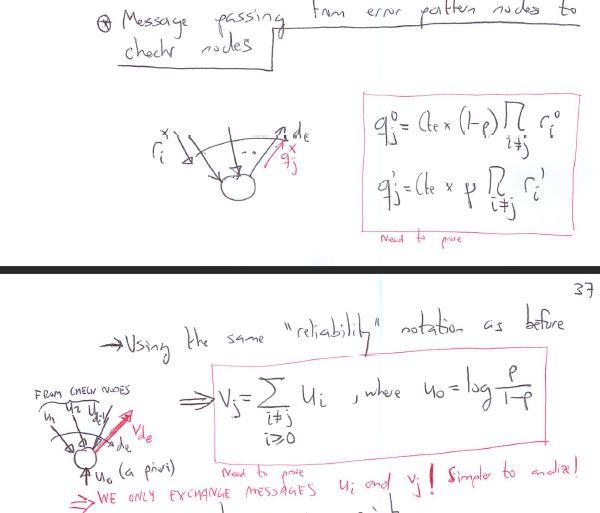Question
Implement the decoder for a (3,6) regular LDPC code for BSC (hard decoding) and AWGN channels (soft decoding) when the information block length is k=10000.
Implement the decoder for a (3,6) regular LDPC code for BSC (hard decoding) and AWGN channels (soft decoding) when the information block length is k=10000. Simulate 500 blocks and obtain the prediction of the bit error rate (BER) as a function of i) The probability of error in the BSC channel (hard decision), ii) Eb/N0 in the AWGN channel (soft decision). For each case (i) and (ii) present a figure showing the prediction obtained from density evolution as well as the simulation results (results from density evolution should match simulation results very well).
You do NOT need to implement the encoder (you can assume that you are always transmitting the all-zero codeword.)
Take into account this notes



Step by Step Solution
There are 3 Steps involved in it
Step: 1

Get Instant Access to Expert-Tailored Solutions
See step-by-step solutions with expert insights and AI powered tools for academic success
Step: 2

Step: 3

Ace Your Homework with AI
Get the answers you need in no time with our AI-driven, step-by-step assistance
Get Started


